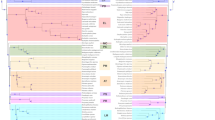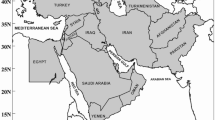Abstract
Springtails and mites are the most abundant and species rich micro arthropods in the Antarctic and species tend to be short-range endemics. It was thought that the Springtail (Collembola), Friesea grisea (Schäffer) was an exception. It was described briefly nearly 150 years ago from South Georgia and has not been redescribed from the type locality since. However, published localities include the South Shetland Islands, the Antarctic Peninsula, Enderby Land, Marguerite Bay and South and North Victoria Land suggesting that it is unusually widespread. Recent sequence data have indicated that some Antarctic populations could be putative species but individuals were allegedly morphologically identical. No sequence data were available for South Georgian specimens. These results suggested that a new examination of the South Georgian species’ morphology was needed in order to resolve the anomalous biogeographic patterns. I here redescribe F. grisea from South Georgia and show that it has subtle morphological characters that distinguish it from Antarctic individuals allowing it to be unambiguously distinguished from all known Antarctic populations. Consequently, Friesea antarctica is taken out of synonymy with F. grisea. These results emphasise the endemism of Antarctic faunas and allows more targeted conservation planning, especially for short-range endemic species located in likely refugia during glacial periods. Descriptions of putative species from the Continental populations are currently in progress. A new Friesea species from South Georgia, F. fantaba, is also described here. The genus Friesea is now the most species-rich genus of terrestrial arthropods in both the Antarctic and subantarctic and includes twelve species.






Similar content being viewed by others
Abbreviations
- abd.:
-
Abdomen
- ant.:
-
Antenna
- PAO:
-
Postantennal organ
- th.:
-
Thorax
- emp. app.:
-
Empodial appendage
- TH:
-
Tenent hairs
- S-chaeta:
-
Sensillum or sensory chaeta
- MC:
-
Macrochaeta
- me:
-
Ordinary chaeta
- SAMA:
-
South Australian Museum
- ZMUH:
-
Zoological Institute and Zoological Museum of the University of Hamburg, Germany
References
Bagnall RS (1941) Notes on British Collembola. Ent Mon Mag 77:217–226
Bellinger PF, Christiansen KA, Janssens F (1996–2017) Checklist of the Collembola of the World. http://www.collembola.org
Booth G, Usher MB (1984) Arthropod communities in a maritime Antarctic moss-turf habitat: effects of the physical and chemical environment. J Anim Ecol 53:879–889
Börner C (1906) Das System der Collembolen, nebst Beschribungen neuer Collembolen des Hamburger Naturhistorishen Museums. Mitt Nat His Mus Hamburg 23:147–188
Brook G (1882) On a new genus of Collembola (Sinella) allied to Degeeria Nicolet. J Linn Soc Zool 16:541–545
Bulavintsev VL (1995) Terrestrial fauna of the south polar region. Antarctika 33:140–156
Convey P, Greenslade P, Arnold RJ, Block W (1999) Collembola of sub-Antarctic South Georgia. Polar Biol 22:1–6
Dalla Torre KW (1895) Die Gattungen und Arten der Apterygogenea (Brauer). Programme K Staats-Gymnamium Inssbruck 46:1–26
Dányi L, Traser G, Kaprus IJ (2010) Redescription of Friesea handschini Kseneman, 1938 (Collembola Neanuridae) with notes on intraspecific variability of the species. Zootaxa 2620:45–55
de Izarra DC (1972) Fauna Colembologica de Isla Victoria (Prov Neuquen Argentina) II Familia Neanuridae. Physis 31:88–96
Deharveng L (1981) Collemboles des Iles subantarctiques de l’Océan Indien Mission J Travé 1972‒1973. Com Nat Français Recher Antarct 48:33–108
Fitch A (1863) Eighth Report on the Noxious and Other Insects of the State of New York: Collembola, pp 186–193
Frati F, Dell’Ampio E (2000) Molecular phylogeny of three subfamilies of the Neanuridae (Insecta Collembola) and the position of the Antarctic species Friesea grisea Schäffer. Pedobiologia 44:342–360
Greenslade PJM (1983) Adversity selection and the habitat templet. Am Nat 122(3):352–365
Greenslade P (1986) Additions to the Collembola of Heard Island. Rec S Aus Mus 19:91–96
Greenslade P (1995) Collembola from the Scotia Arc and Antarctic Peninsula including descriptions of two new species and notes on biogeography. Pol Pismo Entomol 64:305–319
Greenslade P (2010) South Shetlands Collembola fauna revisited. Antarc Sci 22:233–242. https://doi.org/10.1017/S095410200999071X
Greenslade P, Deharveng L (1997) Revision of Friesea species (Collembola: Neanuridae) of Australia and offshore islands with biogeographical notes and key to species. Invert Taxon 11:321–331
Greenslade P, Convey P (2012) Exotic Collembola on subantarctic islands: pathways, origins and biology. Biol Invas 14:405–417. https://doi.org/10.1007/s10530-011-0086-8
Grow AB, Christiansen K (1974) Chaetotaxy in Nearctic Friesea (Collembola Neanurinae) with notes on taxonomic use of chaetotaxy. Rev Ecol Biol Sol 11:377–396
Kseneman M (1938) Apterygoten aus der Reservation “Pop Ivan” in Karpathenrussland Aus: durchforschung der naturwaelder in Podkarpatska Rus. Rec Trav Inst Recher Agronom Republ Tchecoslovaque 152:451–524
Lee JR, Raymon B, Bracegirdle TJ et al (2017) Climate change drives expansion of Antarctic ice-free habitat. Nature 547:49–54
Massoud Z (1967) Monographie des Neanuridae Collemboles Poduromorphes a pièces buccales modifies. Biol. Amer. Austr. 3:7–399
Najt J, Rubio I (1978) Collemboles des Iles Malouines, I. Bull Soc d’Hist Natur Toulouse 114:288–298
Obenberger J (1955) Entomologie II, Systematická Cást 1, Praha, p. 1–726
Potapov MB, Banasco JA (1985) A new species of springtails from Cuba with comments on the role of chaeotaxy in diagnostics on the Friesea (Collembola Neanuridae) species. Zool Zhur 6:1162–1167
Rapoport EH, Rubio I (1963) Fauna Colembologica de Chile. Inv Zool Chilensa 9:95–124
Salmon J (1949) New Subantarctic Collembola. Cape Exped Ser Bull 4:1–54
Salmon JT (1951) Keys and bibliography to the Collembola. Victoria University of Wellington, Wellington
Schäffer C (1891) Die Collembolen von Sud-Georgien nach der Ausbeuter der deutschen Station von 1882/83. Jarhbuch Hamburg Wissenschaft Anstalt 9:1–9
Smolis A (2010) Two new species of Collembola: Friesea kariae sp nov (Neanuridae) and Stachia oregonenensis sp. nov. (Odontellidae) from North America. Zootaxa 2515:36–44
Stevens M, Greenslade P, Hogg ID, Sunnucks P (2005) Southern Hemisphere springtails: could they have survived glaciation of Antarctica? Mol Biol Evol 23:874–882
Tomosvary O (1882) Adatok Hazánk Thysanure-Faunájához. Math term Kozlem Magyar Aka 18:119–130
Torricelli G, Carapelli A, Convey P, Nardi F, Boore JL, Frati F (2010a) High divergence across the whole mitochondrial genome in the “pan-Antarctic” springtail Friesea grisea: evidence for cryptic species? Gene 449:30–40
Torricelli G, Frati F, Convey P, Telford M, Carapelli A (2010b) Population structure of Friesea grisea (Collembola Neanuridae) in the Antarctic Peninsula and Victoria Land: evidence for local genetic differentiation of pre-Pleistocene origin. Antarct Sci 22:757–765
Tullberg T (1871) Förtecknung öfver Svenska Poduridae öfvers Svenska Podurider. Öfversig Kongl Vetens-Akad Förhand Stockholm 28:143–155
Wahlgren E (1906) Antarktische und subantarktische Collembolen gessammelt von der schwedischen Sudpolar expedition. Wisssenschaft ergeb Schwed Sudpolar–Exped 1901–3 (Stockholm 1908) Zool 1:1–22
Weiner WM (1980) Friesea woyciechowskii sp n (Collembola Neanuridae) from King George Island (South Shetland Islands Antarctica). Pol Pismo Entomol 50:402–405
Willem V (1901) Les Collemboles recueillis par l’Expedition Antarctique Belge. Ann Soc Entomol Belg 45:260–262
Willem V (1902) Collemboles Expédition Antarctique Belge Résultants du Voyage du S Y Belgica 1897–1899. Rapports scientifique Zoologie 9:1–19
Wise KAJ (1967) Collembola (Springtails). Antarct Res Ser 10:123–148
Wise KAJ (1970) Insects of Heard Island. Pacif Ins Monogr 23:209–215
Wise KAJ (1971) The Collembola of Antarctica. Pacif Ins Monogr 25:57–74
Yosii R (1956) Hohlencollembolen Japans II. Jap J Zool 11:609–627
Acknowledgements
Thanks are due to Peter Convey, British Antarctic Survey Moscow for supplying specimens. Isabel Greenslade assisted in the preparation of the figures.
Author information
Authors and Affiliations
Corresponding author
Rights and permissions
About this article
Cite this article
Greenslade, P. An antarctic biogeographical anomaly resolved: the true identity of a widespread species of Collembola. Polar Biol 41, 969–981 (2018). https://doi.org/10.1007/s00300-018-2261-1
Received:
Revised:
Accepted:
Published:
Issue Date:
DOI: https://doi.org/10.1007/s00300-018-2261-1




